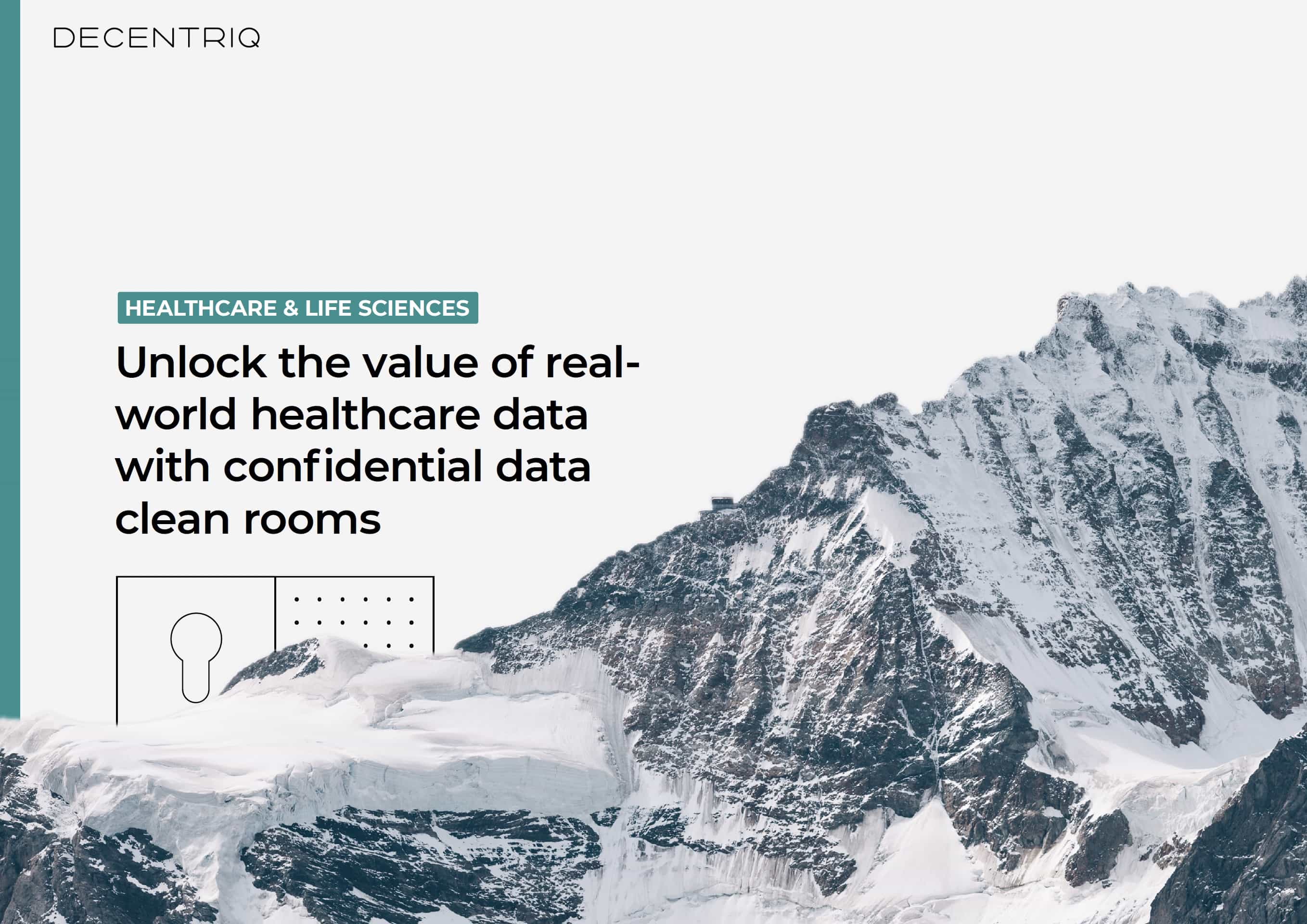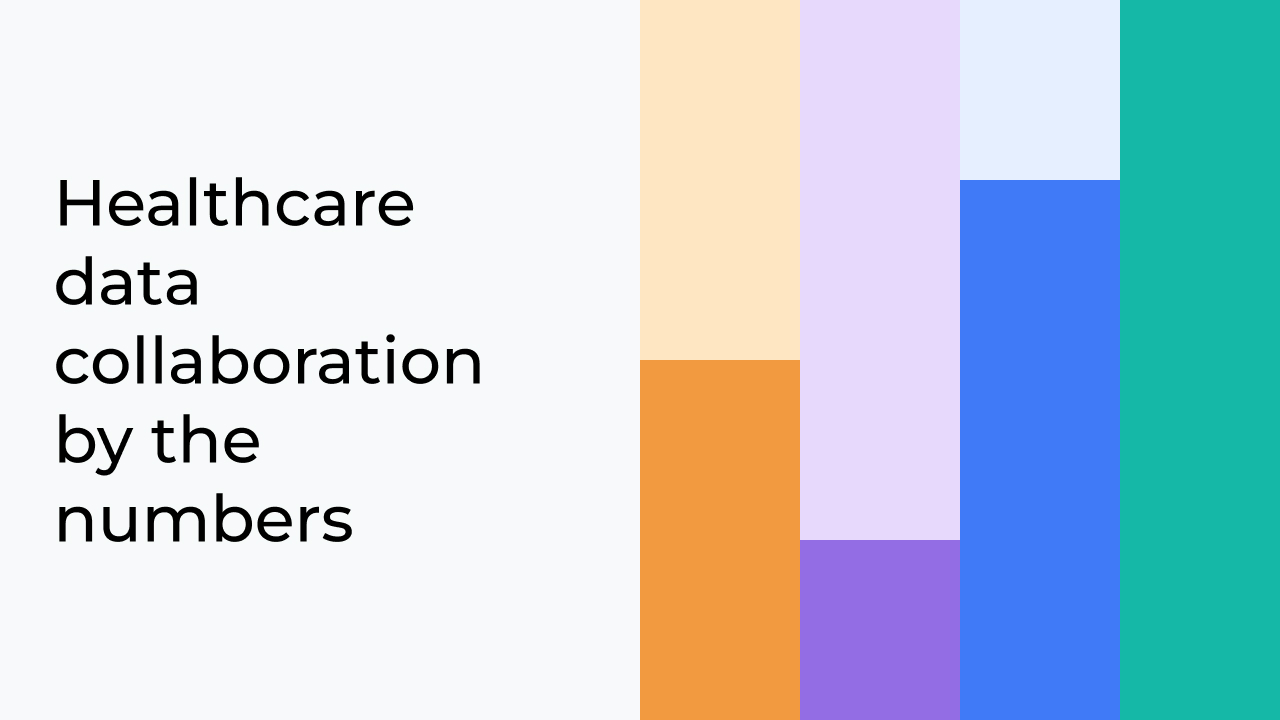Navigating the balancing act of data collaboration in healthcare

Whitepaper: Unlock the value of real-world healthcare data with confidential data clean rooms
As the amount of healthcare data from real-world settings grows, how can care providers and life sciences companies use this data to advance research and treatment while protecting sensitive patient information?

The intersection of data protection and the life-saving potential of medical data poses a unique challenge for the healthcare sector. The dilemma at hand is a complex one: How can healthcare strike a balance between safeguarding sensitive data and harnessing the power of collaborative efforts to improve patient outcomes?

A case study for the necessity of data collaboration: The gender health gap
The necessity of data collaboration is a crucial component of narrowing the gender health gap — a longstanding issue rooted in the historical underserving of women in healthcare. While the women's health field has made strides in recent years to address conditions specific to women, such as menopause and endometriosis, a significant gap remains in research on gender-neutral diseases like cardiovascular diseases (CVDs), which are the leading cause of death globally, but affect women and men differently. The predominant use of male-centric data in clinical trials around conditions such as CVDs has led to suboptimal treatments for women, a disparity that real-world data has the potential to rectify.
The healthcare landscape is currently witnessing a surge in financing for women's health startups, promising a wealth of data that could reshape medical treatment for women. However, this potential is not without its challenges. Because these startups rely heavily on the data they generate, concerns about intellectual property and privacy have emerged as substantial roadblocks to collaboration on this data.
Now that more data around women’s health is finally starting to be collected, putting it to practical use is more important than ever. The accumulation of diverse datasets through collaboration can contribute to a more comprehensive understanding of women's health, addressing not only specific conditions but also broader issues like cardiovascular diseases. In doing so, the medical community can begin catching up on the last centuries of medicine, which has been predominantly built on male-centric data — ultimately fostering a more inclusive and effective healthcare system for all.
So as healthcare providers and custodians of data navigate this specific challenge, the question becomes even more pronounced: how can the imperative to protect patient privacy be harmonized with the undeniable potential of collaborative data analysis?
The answer lies in embracing collaboration methods that empower data custodians to maintain control over their data while still contributing to collective efforts that can save lives.
The crucial role of data custodianship
Central to any data collaboration solution for healthcare is the concept of data custodianship – a framework that allows organizations to retain control over their data while making it available for collaborative analysis.
By implementing robust data custodianship models, hospitals can contribute to broader healthcare initiatives while still safeguarding the sensitive information entrusted to them and adhering to compliance regulations.
On the other side of a typical healthcare sector collaboration, data custodianship enables life sciences companies who collaborate with hospitals to keep their proprietary information private and also remain compliant.
Technological innovations driving secure data collaboration
Federated learning (FL):
FL decentralizes data analysis, performing computations on premise and sharing only model parameters for consolidation. However, on-site computing requirements increase costs and hinder scalability. FL's limitations, such as the inability to support certain analyses and potential privacy risks, don’t always support privacy and utility equally.
Synthetic data:
Synthetic data generation creates artificial data with statistical properties similar to the original dataset, allowing for privacy-preserving analysis. However, the process involves training a machine learning model on the original data, posing challenges when combining multiple datasets. Ensuring both accuracy and privacy is crucial, as more accurate synthetic data increases utility but also raises the risk of revealing confidential information.
Confidential computing:
Confidential computing uses advanced encryption technology to maintain data privacy throughout use. It ensures secure computations in a separate, protected environment, eliminating the need for extensive privacy agreements and offering the highest level of assurance for data security. Confidential computing enables analysis without sharing raw data — meeting strict privacy requirements and prioritizing both data security and collaborative insights.
Cultivating trust and transparency
Beyond technological advancements, establishing trust and transparency between collaborators is crucial for successfully working together on healthcare data. Clear and standardized protocols for data collaboration, informed consent processes, and ethical guidelines are essential components of a collaborative ecosystem that respects the rights of patients and instills confidence in stakeholders.
Establishing a culture of trust and transparency within collaborative healthcare initiatives hinges on selecting solutions that not only implement clear protocols and processes but also seamlessly adhere to compliance regulations. This trust among collaborators is fortified when the chosen technology actively supports and integrates these essential elements.
By opting for solutions that come pre-equipped with robust protocols and processes, healthcare stakeholders send a strong signal of commitment to ethical and transparent practices. These solutions lay the groundwork for reliable data governance, clear consent procedures, and standardized protocols, fostering a shared understanding among collaborators.
When the underlying technology of a solution easily aligns with and enables compliance with regulatory frameworks, this demonstrates a dedication to not only meeting but exceeding privacy standards. And it translates into a heightened level of assurance for all parties involved, reinforcing the collaborative ecosystem's credibility.
This proactive approach not only streamlines collaborative efforts but also paves the way for sustainable, ethically sound partnerships in the pursuit of advancing healthcare outcomes.
The way forward
The healthcare sector’s need to protect data while still being able to use it for vital research initiatives necessitates a paradigm shift towards innovative collaboration methods. Data custodianship, supported by advanced technologies and a commitment to ethical practices, is the key to navigating this delicate balance.
By empowering healthcare stakeholders with scalable solutions that prioritize privacy and security, the industry can harness the collective power of data to drive advancements in public healthcare while respecting the fundamental right to patient privacy.
With confidential computing as their technological foundation, Decentriq’s data clean rooms for healthcare and life sciences include the strictest privacy and compliance standards by design.
So you can cut the setup time for a collaboration by up to 90% and know that no one — not even Decentriq — can see the raw data in the collaboration. Learn more in our whitepaper.
References
Whitepaper: Unlock the value of real-world healthcare data with confidential data clean rooms
As the amount of healthcare data from real-world settings grows, how can care providers and life sciences companies use this data to advance research and treatment while protecting sensitive patient information?

Related content
Subscribe to Decentriq
Stay connected with Decentriq. Receive email notifications about industry news and product updates.




